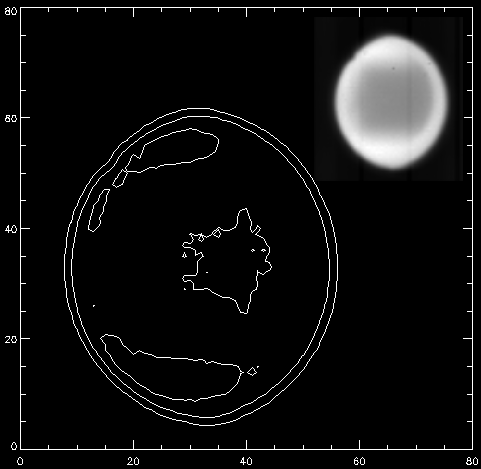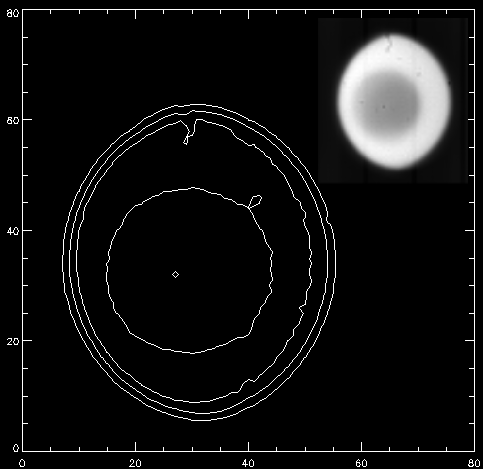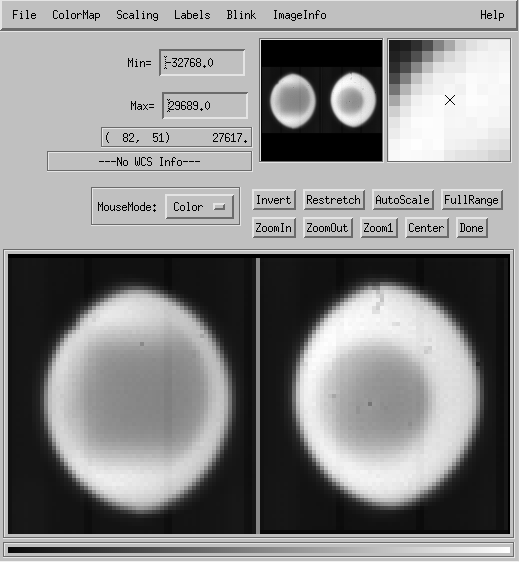OirGetData
Now it is time to see what MIDI files contain. Start "Gorgonzola" by typing
calfile=midigui(dir='<path>')
mark all files related to the calibrator HD 10380 and press "SELECT". Now calfile[0] contains the name of the acquisition data file, calfile[1] the three names of the tracking data files, calfile[2] the name of the file for the photometry of beam A (AOPEN), and calfile[3] the name of the file for the photometry of beam B (BOPEN). To read in for example the acquisition data type
acq=oirgetdata(calfile[0])
This will take a few seconds and the data is read into the variable acq.
TVSCL
With
tvscl,acq[100].data1
the 100th frame of beam B (data1) is displayed. Since each real pixel on the detector is shown as one pixel on your monitor, it's a good idea to magnify the image, e.g. by a factor 5:
tvsclm,acq[100].data1,5
Try also e.g. a contour plot with
contour,acq[100].data1
In the image below the first output is displayed as an inset

One can clearly discriminate the boundary of the beam (circular border) from the light coming from the delay line tunnel (arcs above and below the center), and the sky (center). The sky is darker than the contribution from the tunnel. The source is not visible yet! The second beam (data2) is displayed below.

You should load the other datasets (i = 1,2,3) and play with them:
acq=oirgetdata(calfile[i])
This may be the time you cherish to have a fast computer with lots of memory! It may last up to a few minutes to load these large files!
MTV
A higher level tool to display the content of the files is "mtv". It's a little IDL-routine that puts MIDI-windows together into one array and calls atv with that array. The graphical user interface is similar to that of the well known "saoimage". To use "mtv" read the data with the above used routine oirgetdata
array=oirgetdata(calfile[?])
and call mtv
mtv,array
Below you see again the acquisition data (calfile[0]).

The routine used to derive the mean and the root mean square of a dataset is
array=oirgetmeanrms(calfile[i])
It returns a table with two rows. The first, i.e.
c[0].data1 or c[0].data2
contains the mean of each of the windows over the data set. The second, i.e.
c[1].data1 or c[1].data2
contains the rms of each of the windows over the data set.